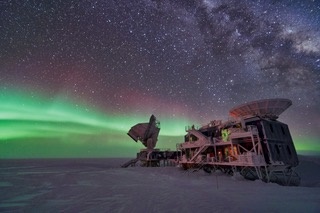Gilbert Holder

South Pole Telescope Data Analysis
The South Pole Telescope is a 10m telescope at the geographic South Pole that is making sensitive high-resolution maps of the mm-wave sky. These maps will be used in a search for gravitational waves produced when the universe began, as well as to map the mass fluctuations on scales of billions of light years. Professor Holder is leading two major data analysis initiatives using data from the South Pole Telescope (SPT) that are each entering a key phase in the next year, as the SPT data are just now passing a threshold where the images of the cosmic microwave background are the lowest noise high-resolution maps made to date by any experiment.
The first initiative involves using images of the cosmic microwave background to identify locations where light from the early universe has been deflected from its original trajectory and thereby build up a map of the locations of large mass concentrations in the Universe. The low noise levels in the SPT data will produce mass maps that are the most sensitive such maps made to date by any experiment in the world. In parallel with this, Professor Holder and his research group are collaborating with another experiment, the BICEP/Keck experiment, to search for gravitational waves from the first moments of the creation of the Universe. The two experiments have complementary features that allow the combined search to be substantially more powerful than anything that has been done to date.
